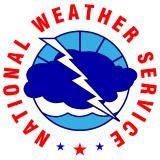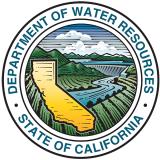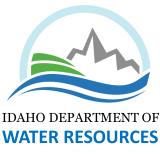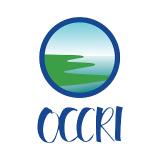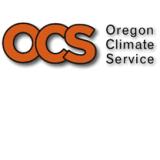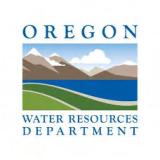Both Warm and Dry Snow Drought Persist Across the West
Key Points
- Autumn 2021 ended with a warm and dry November for much of the West, leaving little snowpack in the mountains to start the climatological winter in December.
- While a shift to more stormy and colder weather increased snowpack in some areas like the Sierra Nevada, snow water equivalent (SWE) is at record low values in New Mexico, Colorado, Utah, Montana, Wyoming, and Nevada.
- Warm snow drought conditions have developed in parts of the Washington Cascades, northern Oregon Cascades, and eastern Oregon.
This USDA Natural Resources Conservation Service (NRCS) map shows Snow Telemetry (SNOTEL) snow water equivalent (SWE) basin values over the western U.S. as a percent of the NRCS 1991–2020 median. Only stations with at least 20 years of data are included in the station averages.
The SWE percent of normal represents the current SWE at selected SNOTEL sites in or near the basin compared to the average value for those sites on this day. This map is valid as of December 14, 2021.
For an interactive version of this map, please visit NRCS.
This USDA Natural Resources Conservation Service (NRCS) map shows Snow Telemetry (SNOTEL) water year-to-date precipitation basin values over Alaska as a percent of the NRCS 1991–2020 median. Only stations with at least 20 years of data are included in the station averages.
The precipitation percent of normal represents the current precipitation found at selected SNOTEL sites in or near the basin compared to the average value for those sites on this day. This map is valid as of December 14, 2021.
For an interactive version of this map, please visit NRCS.
SWE Percent of NRCS 1991-2020 Median
This USDA Natural Resources Conservation Service (NRCS) map shows Snow Telemetry (SNOTEL) snow water equivalent (SWE) basin values over the western U.S. as a percent of the NRCS 1991–2020 median. Only stations with at least 20 years of data are included in the station averages.
The SWE percent of normal represents the current SWE at selected SNOTEL sites in or near the basin compared to the average value for those sites on this day. This map is valid as of December 14, 2021.
For an interactive version of this map, please visit NRCS.
This USDA Natural Resources Conservation Service (NRCS) map shows Snow Telemetry (SNOTEL) water year-to-date precipitation basin values over Alaska as a percent of the NRCS 1991–2020 median. Only stations with at least 20 years of data are included in the station averages.
The precipitation percent of normal represents the current precipitation found at selected SNOTEL sites in or near the basin compared to the average value for those sites on this day. This map is valid as of December 14, 2021.
For an interactive version of this map, please visit NRCS.
Snow Drought Update for December 16, 2021
This update is based on data available up to Tuesday, December 14, 2021 at 12:00 a.m., and we acknowledge that additional snow is currently falling and conditions are changing.
Autumn 2021 ended with a warm and dry November for much of the West (with the exception of parts of the Pacific Northwest), leaving little snowpack in the mountains to start the climatological winter in December. However, snow drought conditions can change quickly early in the season, and a shift to more active and colder weather has brought widespread increases in the snowpack by mid-December.
Regions that currently have well-below-normal (<50%–69% of median) snow water equivalent (SWE) include the Rio Grande River Basin, the Front Range of Colorado, northern Utah, western Wyoming, southwestern Montana, northeastern Nevada, eastern Oregon, and the southern extent of the Cascades in Oregon and California. SNOTEL station SWE percentiles are at record lows for December 14 in six states: New Mexico, Colorado, Utah, Montana, Wyoming, and Nevada. Snow drought in these areas has mostly been driven by a lack of precipitation. Statewide SWE in California jumped from 18% of normal on December 1 to 83% of normal on December 15 based on data from California Department of Water Resources snow pillows; most of this increased snowpack has come between December 13–15 as several storms slammed into the Sierra Nevada.
Warm snow drought (i.e., lack of snow accumulation despite near-normal precipitation, usually as a result of warm temperatures) conditions have developed in parts of the Washington Cascades, northern Oregon Cascades, and eastern Oregon. A series of atmospheric rivers in mid-November brought heavy precipitation that was accompanied by a strong influx of subtropical moisture, rising temperatures, and rising snow levels. For example, the Yakima Basin in Washington currently sits at 121% of average precipitation (median not available from the Natural Resources Conservation Service) since November 1 and only 71% of median SWE.
In Alaska, current SNOTEL measurements and the beginning of the December snow course SWE suggest that snow drought is currently limited to a few isolated areas. Despite significant snowfall December 5–7, one SNOTEL station in the lower Susitna Valley north of Anchorage is reporting 37% of median SWE; a significant precipitation event occurred in early November with above freezing temperatures and no snow accumulation. Two snow courses in Susitna Valley reported less than 50% of median SWE at the start of December. Southcentral and southeastern Alaska both currently have well-above-normal SWE. A major storm cycle in late October and early November brought heavy precipitation (over 10 inches in some locations) and relatively high snow levels to southcentral Alaska with limited snow accumulation at lower elevations in the mountains and valleys but heavy snowfall at higher elevations.
Stations with SWE Below the 30th Percentile

* Quantifying snow drought values is an ongoing research effort. Here we have used the 30th percentile as a starting point based on partner expertise. Get more information on the current definition of snow drought here.
For More Information, Please Contact:
Daniel McEvoy
Western Regional Climate Center
Daniel.McEvoy@dri.edu
Amanda Sheffield
NOAA/NIDIS California-Nevada Regional Drought Information Coordinator
Amanda.Sheffield@noaa.gov
Britt Parker
NOAA/NIDIS Pacific Northwest and Missouri River Basin Regional Drought Information Coordinator
Britt.Parker@noaa.gov
NIDIS and its partners launched this snow drought effort in 2018 to provide data, maps, and tools for monitoring snow drought and its impacts as well as communicating the status of snow drought across the United States, including Alaska. Thank you to our partners for your continued support of this effort and review of these updates. If you would like to report snow drought impacts, please use the link below. Information collected will be shared with the states affected to help us better understand the short term, long term, and cumulative impacts of snow drought to the citizens and the economy of the regions reliant on snowpack.
Report your Snow Drought Impacts Data and Maps | Snow Drought Research and Learn | Snow Drought




